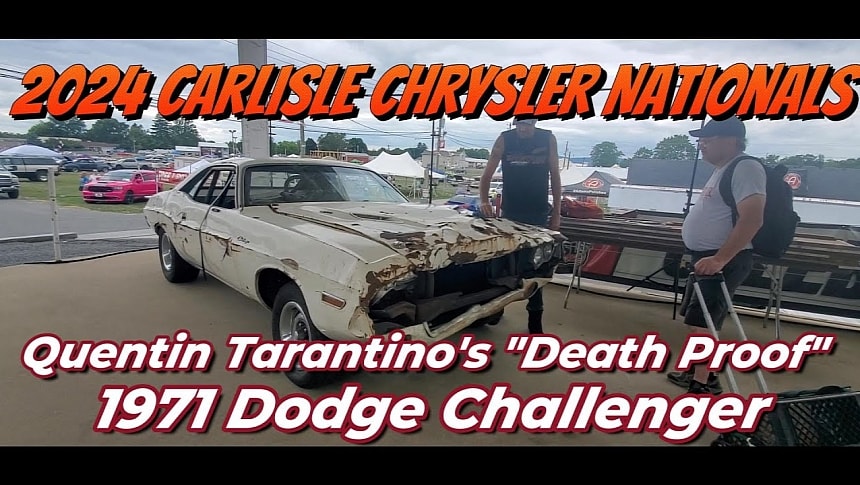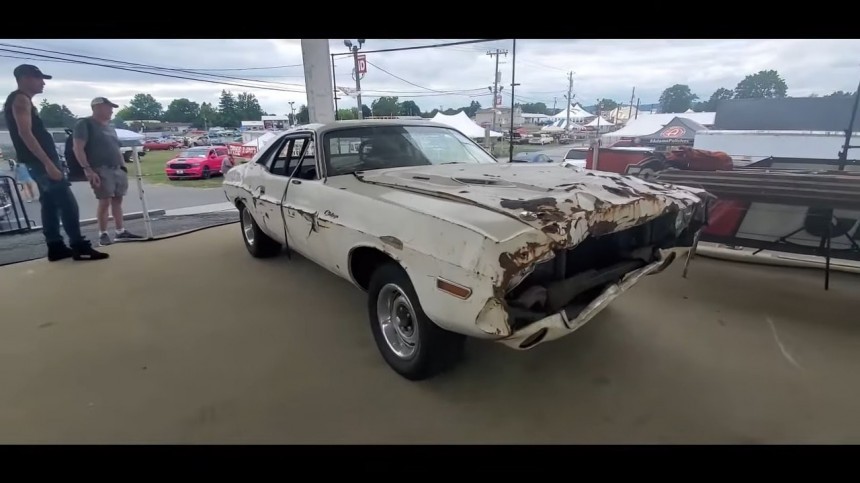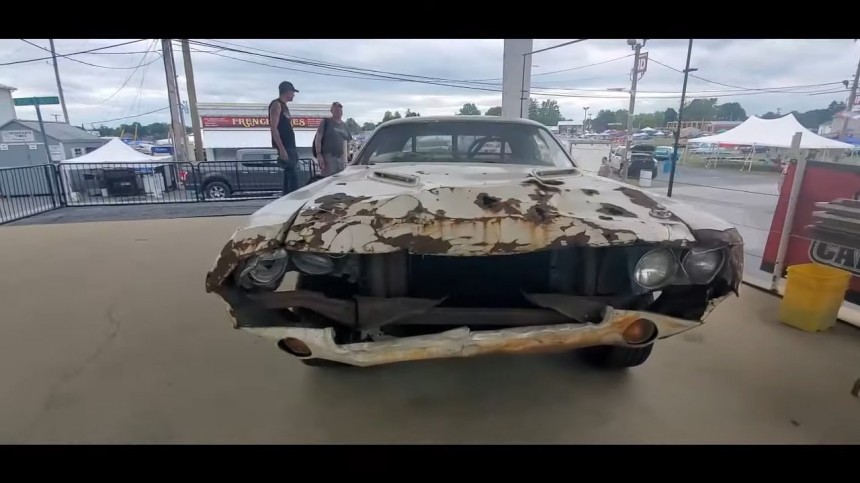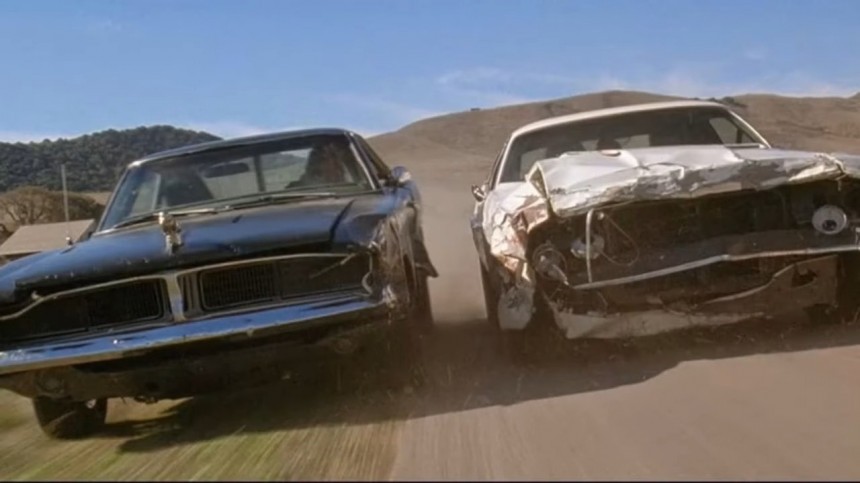Introduced in 1970 on a specially developed E-body platform, the Dodge Challenger was one of Chrysler’s two answers to the pony car fashion. Having failed to break the bank with the model that actually planted the flag in the ‘pony car’ territory (that would be the 1964 Plymouth Barracuda), Mother Mopar retorted in 1970 with a double jab: the all-new Dodge Challenger and the redesigned from the ground up ‘Cuda.
The last to show up at the party, the Challenger and the Barracuda didn’t spur a cataclysmic interest. By then, the style had grown long in the tooth (pony cars were already six years old), and the options were plentiful. Chevrolet had a good run with the Camaro, Pontiac upped the ante with the Firebird (and its meaner Trans Am brother), Mercury’s Cougar was on the prowl, the Javelin was spearheading AMC’s best efforts – it was a crowded place to ask for a seat.
However, the Challenger was well received, selling 77,000 examples in its first year in the showrooms. By 1971, however, customers’ tastes were shifting toward something else other than the youthful ponies, and production numbers dropped to one-third of the initial year, scoring 27,377 Challengers of all body types. Hardtops and convertibles were still the norm for the new nameplate. Still, the addition of a pillared coupe was something of a breakaway from tradition.
Purists didn’t exactly stand up and ovate the post coupe, so just 2,053 were ordered – the writing was on the wall for the Challenger. After three more years of suffocating in mediocrity, the Challenger pony car was retired, with 165,437 units sold over the five model years of production. It is one of the rarest pony cars of the classic era, and its silver screen career is perhaps undeservingly overlooked.
The famous title ‘Vanishing Point’ is probably the first answer to the question ‘What movie has a first-gen Challenger in it?’ While its divisional brother, the Charger, is equally famous for ‘Bullitt’ and the ‘Dukes of Hazzard,’ the Challenger doesn’t get much credit past that vanishing point. Indeed, the classic film served as inspiration for one of Hollywood’s most famous big-shots, Quentin Tarantino, for his ‘Death Proof’ movie from 2007.
While the production wasn’t exactly a blockbuster, grossing $31,12 million, it had some very well-executed car chases that would deserve a lot more attention. A sinister black 1969 Charger engages in a death race against a white 1970 Dodge Challenger 440 Magnum. At least, that was the fictional depiction of the car used in the filming.
In truth, the 1970 Challenger was a 1971 model with enough cinematographic makeup to mimic the real-deal R/T from the first years. Obviously, since the movie script involved a lot of crashing, rear-ending, barrel-rolling, jumping, and overall car mayhem, the piston-powered starts came out pretty rough.
After the filming ended, the beaten Dodges were sold to a production assistant from the set of ‘Death Proof’ and then found their way into private hands. One of the Challengers used as a stunt car ended up in Finland, another made it across the equator into Australia, and yet another—the most battle-scarred of them—has made a guest star appearance at the 2024 Chrysler Nationals in Carlisle, Pennsylvania.
The current owner bought it almost by chance—play the video below to hear the whole story—and drives it to car shows and other automobilia-centered events. Underneath the beaten shell, a study roll cage protected the stunt driver, and a sturdy scaffolding of steel girders stiffened the car so it could survive the ordeal.
Tarantino insisted that the high-adrenaline action-packed car chases be real (as in, no CGI whatsoever), and the Challengers starring in the sequences were heavily modified to take the beating. Play the second video to see how and what went into the making of this movie. As for the Challenger presented at Carlile, it’s not a real Road/Track edition, but a look-alike with a 383-cubic-inch V8 running on alcohol.
The 6.3-liter big-block was the standard engine for the Challenger R/T (it was seconded by the 440-4 or Six-Pack and the 426 Hemi), and this particular car has a purpose-built V8 that also runs on regular gasoline. The interesting feature of the movie star is not the powerplant but its pillared door body style. While the hood emblem and air intakes are definitely an R/T signature trait, all the performance variants of the Challenger had a hardtop or convertible body in 1970.
The post was used as a safety feature for the stunt scene where one of the lead actresses hangs on the hood of the car while it shoots down the road, trying to escape the Charger driven by Kurt Russell’s character. A strap was secured on the inside of the cabin, and the actress would hold on to the other end with one hand – at speeds sometimes exceeding 60 mph (97 kph).
However, the Challenger was well received, selling 77,000 examples in its first year in the showrooms. By 1971, however, customers’ tastes were shifting toward something else other than the youthful ponies, and production numbers dropped to one-third of the initial year, scoring 27,377 Challengers of all body types. Hardtops and convertibles were still the norm for the new nameplate. Still, the addition of a pillared coupe was something of a breakaway from tradition.
Purists didn’t exactly stand up and ovate the post coupe, so just 2,053 were ordered – the writing was on the wall for the Challenger. After three more years of suffocating in mediocrity, the Challenger pony car was retired, with 165,437 units sold over the five model years of production. It is one of the rarest pony cars of the classic era, and its silver screen career is perhaps undeservingly overlooked.
While the production wasn’t exactly a blockbuster, grossing $31,12 million, it had some very well-executed car chases that would deserve a lot more attention. A sinister black 1969 Charger engages in a death race against a white 1970 Dodge Challenger 440 Magnum. At least, that was the fictional depiction of the car used in the filming.
In truth, the 1970 Challenger was a 1971 model with enough cinematographic makeup to mimic the real-deal R/T from the first years. Obviously, since the movie script involved a lot of crashing, rear-ending, barrel-rolling, jumping, and overall car mayhem, the piston-powered starts came out pretty rough.
The current owner bought it almost by chance—play the video below to hear the whole story—and drives it to car shows and other automobilia-centered events. Underneath the beaten shell, a study roll cage protected the stunt driver, and a sturdy scaffolding of steel girders stiffened the car so it could survive the ordeal.
Tarantino insisted that the high-adrenaline action-packed car chases be real (as in, no CGI whatsoever), and the Challengers starring in the sequences were heavily modified to take the beating. Play the second video to see how and what went into the making of this movie. As for the Challenger presented at Carlile, it’s not a real Road/Track edition, but a look-alike with a 383-cubic-inch V8 running on alcohol.
The post was used as a safety feature for the stunt scene where one of the lead actresses hangs on the hood of the car while it shoots down the road, trying to escape the Charger driven by Kurt Russell’s character. A strap was secured on the inside of the cabin, and the actress would hold on to the other end with one hand – at speeds sometimes exceeding 60 mph (97 kph).




































